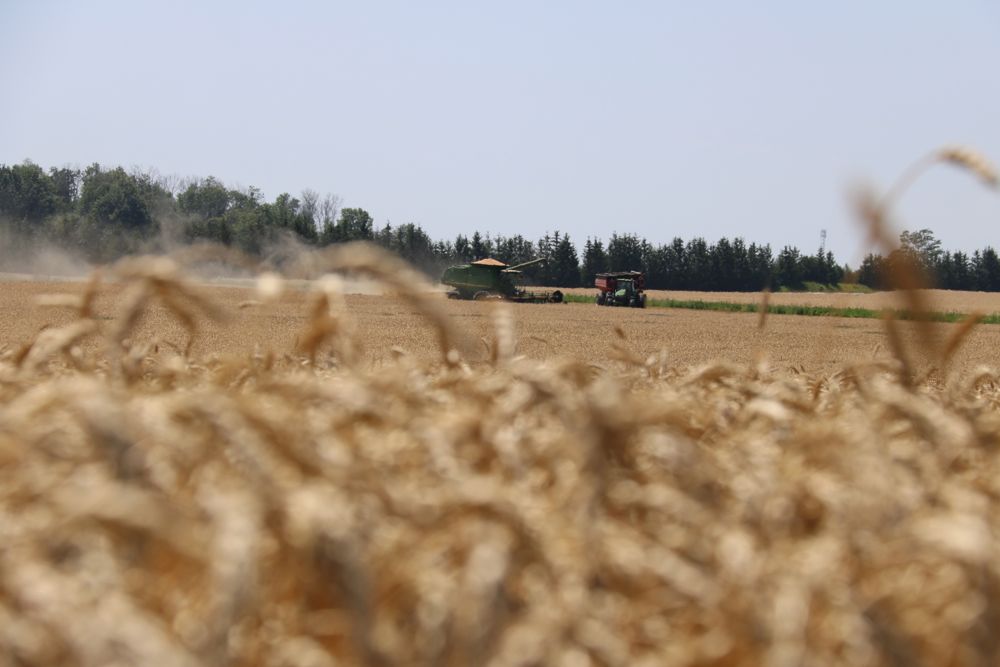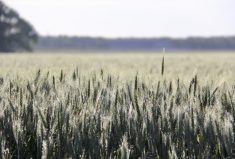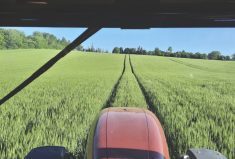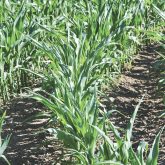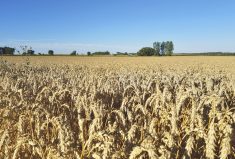Ontario’s winter wheat crop is living up to its great expectations after a warm winter and lots of spring rain got it off to a great start.
Farmers have been harvesting the crop for two weeks in the southwest of the province, but are just getting going in other areas.
“I think the wheat’s looking pretty good,” said Don Kabbes, general manager of Great Lakes Grain.
“Test weights have been quite good,” he said, although if rains continue as the wheat gets riper, test weight could fall a bit.
The wheat is of good quality, with little evidence of fusarium or sprouting at this point.
In the furthest south of the province, Essex and Kent counties, the wheat harvest could mostly be wrapped up by the weekend, he said. Combines are moving in Lambton, Middlesex and Huron counties as well.
Read Also

Producers aren’t panicking over tariffs and trade threats
The influence of tariff and trade uncertainity on farm business decisions.
“I think we dodged a bullet with the fusarium,” he said. “When wheat was heading, we thought there could be huge fusarium infection. Farmers have done a good job of protecting the head.”
A lot of wheat, with good yield potential and risky rains, received fungicide applications this year.
“Guys sprayed diligently,” said Gary Bauman, a field marketer with Hensall District Co-operative, based in Mitchell, Ont. Farmers who had not sprayed in other years, “I told them this year to go do it, the wheat looked so good.”
“Yields are average to slightly above average, maybe not quite as high as last year,” said Joanna Follings, cereals specialist with the Ontario ag ministry (OMAFRA) in Stratford.
In eastern Ontario, there could be more challenges with fusarium, Follings said, as that region received even greater rainfall, making it more difficult for farmers to get onto the fields to spray a fungicide. Fusarium is showing up in some of the eastern Ontario wheat.
Wheat has rallied nicely since June 22, following the market for spring wheat up with the droughty conditions in wheat growing areas in the U.S. The market gave back some of the gains last week, but the price means there’s opportunity for farmers, said Kabbes, including that there might be value in drying the wheat.
Lodging has also not been an issue in the southwest. However, in the area further north, in Perth and Wellington counties where there has been greater rainfall, farmers are just testing the fields, Bauman said, with moisture at 16 per cent.
“We’ve got a good looking wheat crop up here, no doubt about it,” he said.
There is some lodging, especially in fields where farmers pushed the fertility. Bauman said some looking for a big crop this year put down 140 lbs. of nitrogen.
“Those are the fields that couldn’t stand. They had nice plump heads and the pounding rains started taking them down,” he said.
Stands with lighter heads and stalks are standing better.
Bauman estimated about 20 per cent of acres in his area have some form of patchy lodging.
“It’s not a severe problem,” he said.
Do a preharvest check, he said — and some might have to slow down while combining.
Soybeans look great and the corn has come along well, he said, despite hard rains in his area.


